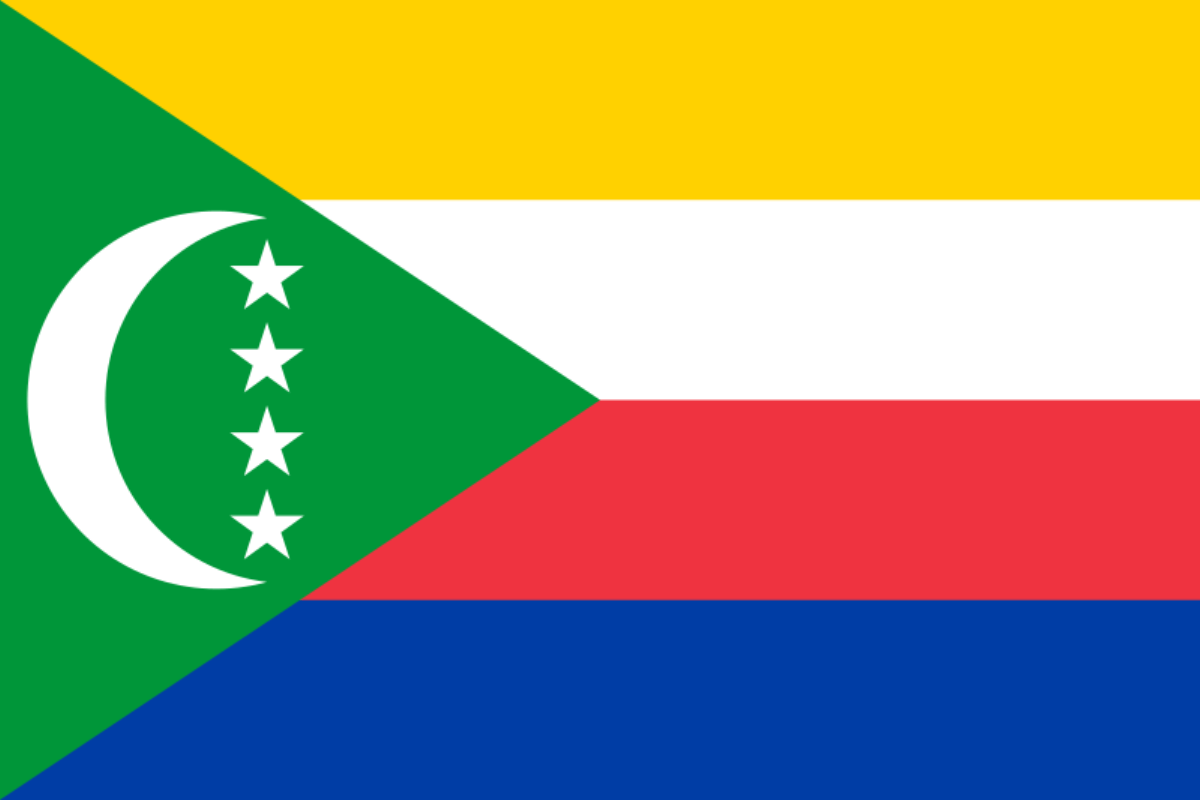The national animal of Comoros is the mongoose lemur. These unassuming little primates are native to Madagascar and having been introduced to the Comoros Islands, living in family groups. They are naturally arboreal as many primates are, and feed mostly on fruit but also eat leaves, flowers and even nectar.
These primates are in a critically precarious position in terms of conservation, though they continue to have a very important symbolic place in the minds of the people of Comoros.
They are important national symbols of a variety of different things and embody many aspects of Comorian culture.
Let’s find out more.

What is the national animal of Comoros?
The national animal of Comoros is the mongoose lemur.
These primates were originally native only to Madagascar, an island nation evolutionarily isolated for such a long time that there are a great many species only found on the island.
They were, though, at some point in the distant past, introduced to the islands of Comoros, too.
They range in size from around 12 to 18 inches long, not including their tail which can be anywhere from 16 to 25 inches long.
Though the sexes look similar at birth, they become dimorphic as they age; both are born with white beards but the males develop red beards and red cheeks as they mature.
They tend to live in dry, deciduous forests in Madagascar but also thrive in the humid forests of the Comoros Islands.
They subsist mostly on a diet of fruit, and where they can get an abundance of fruit they will happily survive on nothing else.
However, they will also eat several other kinds of plant matter like flowers, leaves, and even nectar.
In the dry season, nectar may comprise as much as 90% of their diet. in some rarer cases they have also been observed to feed on beetles and grubs.
Unusually, they can be both diurnal and nocturnal, depending on the season.
During the wet season they will be most active during the day, and vice versa during the dry season when it is much hotter during the day.
As mentioned, they are arboreal, and can leap many meters from one tree to another.
Their social groups comprise small family groups, typically a bonded pair and a few offspring.
Groups do not commonly encounter each other, but these meetings are, virtually without exception, aggressive.
They are, unfortunately, critically endangered and significant efforts will need to be made in the future to ensure their continued survival.
Why is the mongoose lemur the national animal of Comoros?
The mongoose lemur is the national animal of Comoros for a few important reasons.
On the one hand, they are simply seen as vitally important national symbols of grace and freedom.
In their free roaming in the forests they are seen to embody aspects of liberty that is also so important to humanity.
They are also fairly elusive, and this sense of mystery and rarity also makes them something like spirits of the forests.
On that note, then, they also are simply seen as embodiments of Comorian natural beauty.
They are very much at home in Comorian humid forests, and so in that way they are seen as ideal inhabitants of one of the island’s most common natural landscapes.
This, also, makes them important national symbols on a more literal level.
As mentioned, though, there is also the problem of their dire state of conservation.
They are listed as critically endangered by the IUCN, and by making them the national animal the Comorian government also hopes to bring attention to their plight and to create awareness.
Awareness alone won’t save them, but it’s certainly a really important step in the right direction.
How many mongoose lemurs are left?
It can be difficult to place precise figures on it when these animals are often quite hard to spot.
Estimates put the total population, across both Comoros and Madagascar, at anywhere from 1,000 to 10,000 individuals.
Either way, this makes them critically endangered and in a very precarious situation.
It’s estimated that their numbers have reduced by around 80% over the last 25 years, which is a staggering and unsustainable rate of decline.
They are of course a protected species now and a great deal of effort is being taken to ensure their continued survival, but nonetheless their situation remains grave.
Are mongoose lemurs related to mongoose?
Mongoose lemurs are not, in fact, related to the animal from which they get their name; at least not very closely.
Of course, all animals are related if you go back far enough.
But mongoose are carnivorous mammals comprising around 23 species which are only distantly related to the mongoose lemur primates.
That said, the resemblance at least in the face is pretty clear to see, and this is really the main reason why mongoose lemurs got their name.
Mongoose lemurs are one of only two species of lemur found outside of Madagascar, so lemurs are only even distantly related to other primates.
So, though they bear no actual relationship to their namesake, it’s easy to see how the name was chosen.
These little primates are unfortunately in a very precarious situation and their future is poised on a knife’s edge.
We can only hope that efforts towards conservation can see their numbers increase in the future and that they will be saved from the brink of extinction.
